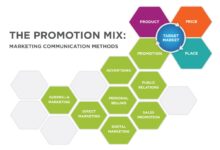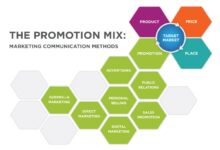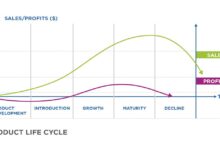Sales Slides: 7 Powerful Tips to Close More Deals Fast
Want to win more clients and close deals faster? It starts with killer sales slides. These aren’t just pretty presentations—they’re strategic tools that guide prospects from interest to action. Let’s dive into how to craft sales slides that convert.
Sales Slides: The Secret Weapon in Modern Selling

In today’s fast-paced business world, attention is scarce. Decision-makers are overloaded with information, and if your pitch doesn’t grab them in seconds, you’ve already lost. That’s where powerful sales slides come in. They distill complex ideas into clear, compelling visuals that guide your audience through a persuasive journey.
Unlike generic PowerPoint decks, effective sales slides are purpose-built. They’re not about showing off data—they’re about telling a story that resonates emotionally and logically with your audience. Whether you’re pitching to a startup founder or a Fortune 500 executive, the right sales slides can make the difference between a ‘maybe’ and a ‘yes.’
Why Sales Slides Matter More Than Ever
The average attention span has dropped to under 8 seconds—shorter than that of a goldfish. In this environment, your sales presentation must be razor-sharp. Sales slides act as visual anchors, helping your audience follow your message without getting lost in jargon or clutter.
According to research by HubSpot, 90% of information transmitted to the brain is visual, and visuals are processed 60,000 times faster than text. This means well-designed sales slides don’t just enhance understanding—they dramatically increase retention and engagement.
Common Mistakes That Kill Sales Slide Effectiveness
Too much text: Slides crammed with paragraphs force your audience to read instead of listen.Poor structure: Jumping between topics confuses the narrative and weakens your argument.Generic templates: Using outdated or overused designs makes your brand feel unoriginal.No clear call-to-action: If the next step isn’t obvious, prospects will stall.
.”A great presentation doesn’t inform—it influences.” — Nancy Duarte, author of Resonate
How to Structure High-Converting Sales Slides
The structure of your sales slides is just as important as the content.A well-organized deck guides your audience through a logical and emotional journey, building momentum toward a decision.Think of it like a movie: every slide should move the story forward..
One of the most effective frameworks for structuring sales slides is the Problem-Agitate-Solution (PAS) model. This approach first identifies a pain point, intensifies it emotionally, and then presents your product or service as the ideal solution.
The PAS Framework in Action
- Problem: Start with a relatable challenge your audience faces. For example: “Most companies lose 30% of their leads due to poor follow-up.”
- Agitate: Highlight the consequences: “That means missed revenue, wasted marketing spend, and frustrated sales teams.”
- Solution: Introduce your offering: “Our AI-powered CRM automates follow-ups, recovering 80% of lost leads.”
This framework taps into emotional triggers while providing a logical resolution, making your sales slides far more persuasive.
Alternative Structures: The AIDA Model
Another proven structure is AIDA: Attention, Interest, Desire, Action. This works especially well for shorter pitches or digital presentations.
- Attention: Open with a bold statement or surprising statistic.
- Interest: Provide context and relevance to the viewer.
- Desire: Showcase benefits, testimonials, or case studies.
- Action: End with a clear, compelling CTA.
For example, a SaaS company might use AIDA to highlight how their tool saves time, increases productivity, and integrates seamlessly with existing workflows—all leading to a free trial offer.
Design Principles for Impactful Sales Slides
Great design isn’t just about looking good—it’s about clarity, credibility, and persuasion. Your sales slides should reflect professionalism while guiding the viewer’s eye to the most important information.
According to Nielsen Norman Group, slides should support the speaker, not replace them. This means minimal text, high-contrast visuals, and consistent branding.
Keep Text Minimal and Scannable
Each slide should convey one key idea. Use bullet points sparingly—ideally no more than 5 per slide—and limit each line to 6–8 words. This forces you to be concise and helps your audience focus on what you’re saying, not reading.
Instead of writing full sentences, use phrases like:
- “Cut onboarding time by 50%”
- “Used by 2,000+ teams worldwide”
- “Integrates with Slack, Teams, and Zoom”
This approach keeps your message punchy and memorable.
Use Visuals Strategically
Images, icons, and charts should enhance understanding—not distract. For example:
- Use infographics to simplify complex processes.
- Include real customer photos (with permission) to build trust.
- Leverage before-and-after comparisons to show transformation.
A study by Visual Thinking Magic found that presentations with relevant visuals improve learning by up to 400%. That’s a massive boost in comprehension and retention.
Consistency Builds Credibility
Stick to a single font pair (e.g., one for headings, one for body text), a cohesive color palette, and uniform slide layouts. Inconsistent design makes your brand look unprofessional and distracts from your message.
Tools like Canva, PowerPoint, and Google Slides offer built-in themes and master slides to help maintain consistency across your sales slides.
Essential Slides Every Sales Deck Must Include
While every presentation is unique, certain slides are non-negotiable for high-converting sales slides. These core components build trust, demonstrate value, and drive action.
The Hook Slide: Grab Attention Immediately
Your first slide sets the tone. Instead of starting with your company logo, open with a bold statement, provocative question, or surprising fact.
Examples:
- “What if you could double your conversion rate in 90 days?”
- “83% of customers abandon purchases due to poor UX.”
- “Meet the tool that saved Company X $1.2M last year.”
This immediate impact pulls your audience in and makes them want to hear more.
The Problem & Pain Point Slide
Before introducing your solution, prove that you understand your audience’s struggles. This slide should reflect deep market research and empathy.
Use real quotes from customer interviews, industry reports, or internal data to validate the pain points. For example:
“Our sales team wastes 15 hours a week on manual data entry.” — Marketing Director, Mid-Sized Tech Firm
This builds credibility and shows you’re not just selling—you’re solving.
The Solution & Value Proposition Slide
Now it’s time to introduce your product or service as the answer. Focus on benefits, not features. Instead of saying “Our platform uses AI,” say “Our AI reduces response time by 70%, boosting customer satisfaction.”
Highlight your unique value proposition (UVP): What makes you different? Why should they choose you over competitors?
The Social Proof Slide
People trust people. Include logos of well-known clients, customer testimonials, case studies, or media mentions. According to Convince & Convert, 92% of consumers trust peer recommendations over advertising.
Even better: show measurable results. For example:
- “Client Y increased revenue by 40% in 6 months”
- “Rated 4.9/5 on G2 Crowd”
- “Featured in Forbes, TechCrunch, and The Wall Street Journal”
The Pricing & Packaging Slide
Be transparent but strategic. Offer 2–3 tiers (e.g., Basic, Pro, Enterprise) to give options without overwhelming. Use visual cues like checkmarks and bold pricing to guide attention.
Avoid listing every feature under each plan—keep it clean. Save detailed comparisons for a handout or follow-up email.
The Call-to-Action Slide
End strong. Your final slide should have a single, clear CTA: “Schedule Your Free Demo,” “Start Your 14-Day Trial,” or “Get Your Custom Quote Today.”
Include a QR code, link, or contact info to make it easy to act. And don’t forget to restate the primary benefit: “Join 5,000+ teams who’ve transformed their workflow.”
How to Tailor Sales Slides for Different Audiences
One-size-fits-all doesn’t work in sales. The same product might need vastly different messaging for a CFO vs. a CMO. Customizing your sales slides shows respect for your audience’s priorities and increases relevance.
Executive-Level Presentations
C-suite leaders care about ROI, risk, and strategic alignment. Focus on big-picture impact:
- Revenue growth potential
- Cost savings
- Competitive advantage
- Time-to-value
Use high-level dashboards, financial projections, and market trends. Avoid technical jargon.
Technical or Operational Teams
These stakeholders want details: integration capabilities, security protocols, uptime SLAs, and user adoption rates.
Include architecture diagrams, API documentation snippets, or compliance certifications (e.g., SOC 2, GDPR).
But still keep slides clean—save deep dives for an appendix or technical briefing.
Multi-Stakeholder Presentations
When presenting to a group with mixed roles, structure your sales slides to address each persona in sequence. Start with strategic value for executives, then transition to operational benefits for managers, and finally technical details for IT or implementation teams.
Use section dividers to signal shifts in focus: “For Leadership,” “For Your Team,” “For IT.”
Leveraging Data and Storytelling in Sales Slides
Data builds credibility. Storytelling builds connection. The most effective sales slides combine both.
Numbers alone are forgettable. But when wrapped in a narrative, they become powerful. For example, instead of saying “Our tool improves efficiency by 35%,” tell the story of a real client who was drowning in admin work—until they implemented your solution and reclaimed 10 hours a week.
Using Case Studies as Mini-Stories
A well-crafted case study slide includes:
- Client background: Industry, size, challenge
- Goal: What they wanted to achieve
- Solution: How your product helped
- Results: Quantified outcomes (e.g., “+60% engagement”)
Use a simple two-column layout: text on one side, a photo or chart on the other.
Visualizing Data for Maximum Impact
Not all charts are created equal. Choose the right type for your message:
- Bar charts: Compare values across categories
- Line graphs: Show trends over time
- Pie charts: Use sparingly—only for showing parts of a whole
- Infographics: Combine data and visuals for complex ideas
Always label axes, simplify legends, and highlight key data points with color or annotations.
Tools and Templates to Create Professional Sales Slides
You don’t need to be a designer to create stunning sales slides. Today’s tools make it easy to build polished, brand-aligned presentations—even on a tight deadline.
Top Design Tools for Sales Slides
- Canva: User-friendly with thousands of templates. Great for non-designers. Visit Canva
- PowerPoint: Still the industry standard, especially with Microsoft 365 integration.
- Google Slides: Ideal for collaboration and real-time feedback.
- Beautiful.ai: AI-powered design that auto-adjusts layouts. Try Beautiful.ai
- Prezi: Dynamic, non-linear presentations for high-impact storytelling.
Recommended Sales Slide Templates
Many platforms offer free and premium templates tailored to sales:
- HubSpot’s Sales Presentation Template: Clean, modern, and conversion-focused. Download here
- SlideModel’s Sales Decks: Professional templates with editable diagrams. Explore SlideModel
- Envato Elements: Unlimited access to premium PPT templates. Check it out
When choosing a template, ensure it’s customizable, mobile-responsive, and aligns with your brand guidelines.
Measuring the Success of Your Sales Slides
Creating great sales slides is only half the battle. The real test is whether they drive results. That’s why tracking performance is critical.
Key Metrics to Track
- Conversion rate: Percentage of presentations that lead to a sale or next step.
- Engagement time: How long prospects spend viewing your deck (especially for digital pitches).
- Slide drop-off: Which slides cause viewers to lose interest or exit.
- Follow-up requests: Number of demos, trials, or quotes requested after the presentation.
Tools like DocSend, Showpad, and HubSpot Sales Hub provide analytics on viewer behavior, helping you refine your sales slides over time.
How to Iterate and Improve
Treat your sales slides as a living document. After each presentation, ask for feedback:
- “What part was most convincing?”
- “Was anything unclear?”
- “What would make you say ‘yes’ faster?”
Use this input to tweak messaging, reorder slides, or add new proof points. A/B test different versions to see what resonates best.
Sales Slides in the Digital Age: Virtual and Automated Selling
The way we sell has changed. With remote work and digital buying journeys, sales slides are no longer just for live meetings. They’re shared via email, embedded in websites, and used in automated sequences.
Optimizing for Asynchronous Viewing
When prospects watch your deck alone, you’re not there to explain. So your sales slides must be self-explanatory.
- Add voiceover narration using tools like Loom or Vidyard.
- Include clear section titles and transitions.
- Use animations sparingly to guide attention.
- End with a clickable CTA button or form.
This turns a static presentation into an interactive experience.
Integrating Sales Slides into CRM and Sales Sequences
Modern CRMs like Salesforce, HubSpot, and Close allow you to attach and track sales slides within deal stages.
You can also embed them in email sequences using tools like Mailchimp or Outreach.io. When a prospect clicks on a slide deck, you get instant notification—enabling timely follow-up.
The Rise of AI-Powered Sales Slides
AI is transforming how we create and deliver sales content. Tools like Tome, Gamma, and Decktopus use artificial intelligence to generate slide decks from a simple prompt.
For example, type “Create a 10-slide sales deck for a SaaS CRM targeting small businesses,” and the AI builds a structured, visually appealing presentation in minutes.
While human oversight is still essential, AI can drastically reduce creation time and ensure consistency across teams.
What makes a great sales slide?
A great sales slide is clear, visually engaging, and focused on one key message. It uses minimal text, strong visuals, and aligns with the audience’s needs. Most importantly, it drives the viewer toward a decision.
How many slides should a sales presentation have?
Ideally, keep it between 10–15 slides. This ensures brevity while covering all essential points. Quality matters more than quantity—every slide should earn its place.
Should I include pricing in my sales slides?
Yes, but strategically. Include high-level pricing tiers to set expectations, but avoid overwhelming details. Save granular breakdowns for one-on-one discussions or proposals.
Can I use animations in sales slides?
Yes, but use them purposefully. Animations should guide attention, not distract. Fade-ins, subtle transitions, and emphasis effects can enhance flow when used sparingly.
How do I make my sales slides stand out?
Focus on storytelling, use real customer proof, maintain brand consistency, and tailor the message to your audience. Avoid generic templates and overused stock photos. Authenticity wins.
Creating powerful sales slides isn’t about flashy graphics—it’s about strategic communication. From structuring your narrative with PAS or AIDA to designing for clarity and impact, every element should serve the goal of closing more deals. Whether you’re presenting live or sharing digitally, your slides must inform, engage, and inspire action. By avoiding common pitfalls, leveraging data and storytelling, and continuously optimizing based on feedback, you can turn your sales slides into a repeatable engine for growth. The best part? These skills are learnable, scalable, and within your reach. Start refining your deck today—and watch your conversion rates rise.
Further Reading:



